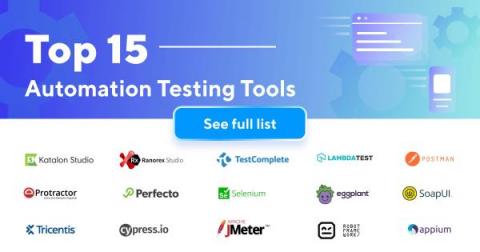Systems | Development | Analytics | API | Testing
%term
Snowflake for Data Lakes and Beyond
Simplifying Authentication for Microservices Security | Jeff Taylor | Okta | Episode 10
Testing Manager - Who? What? Why?
80% of Those Satisfied with Software Quality Participate in Tool-based Code Review Says Survey by SmartBear
Announcing Katalon TestCloud | Cloud-based Cross-Browser Testing in The Katalon Platform
Today, software applications need to deliver a consistent and reliable experience across multiple browsers, operating systems, and devices. To accomplish this, companies are spending valuable resources and time manually deploying dedicated test infrastructures. This translates into a limited availability of test scenarios and prevents companies from generating enough test coverage to ensure the best user experience across the most commonly used platforms.
Test and Optimize Your Ruby on Rails Database Performance
In this article, you will learn how to test database performance in Rails and solve some of the most common database performance issues. When you develop a Rails application, ActiveRecord is the default tool that manages your database. ActiveRecord provides an easy and fast interface to query and insert data using commands like.where, .save, .create, and.update. Rails does the work of converting these commands to SQL queries, which is a good thing, but sometimes can cause performance issues.
How Will First-party Data Be the Game Changer of 2022?
A lot of things got easier in 2021 as technology advanced tremendously to continue making the digital world more accessible and integrated into our everyday lives. But luckily there was something that got harder in 2021: being irresponsible with data. You see, with great power comes great responsibility, and as people’s data gets poured online, more and more restrictions appear to ensure that data is always safe, without exceptions.
American Airlines Dev Experience Takes Off With Service Mesh
Kubernetes is hard. Last year, we started the developer experience product at American Airlines. As we transitioned into the later half of 2020 and into 2021, we wanted to tackle Kubernetes app deployments. We aimed to make it easy for the users to do the right things, no matter how difficult those tasks were. Through our Kubernetes journey, we created reproducible patterns for application teams to use to make things even easier.











